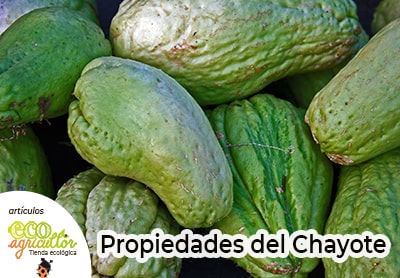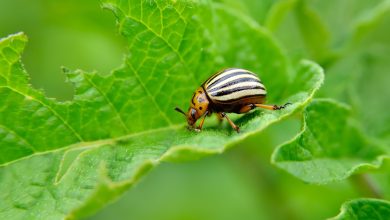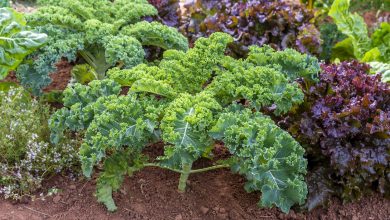Chayote, a nutritious food that takes care of your health

You may have eaten it on numerous occasions but you do not know its nutritional value and what it is good for. Now we will discover everything about the chayote!
In this article we offer you the most interesting and up-to-date facts about the chayote. You will see that it is a food that is as interesting as it is beneficial for our health.
What is Chayote?
The chayote, also known by other names such as papa del aire, gayota, cidrayota or chuchu , is the fruit of the chayotera ( Sechium edule ), a perennial climbing plant widely distributed in Mesoamerica and, since the 18th century, in South America and Europe.
It is a species belonging to the botanical family of the Cucurbitaceae , like cucumber , melon , watermelon and pumpkin , among other vegetables.
Currently, Mexico and Costa Rica are the main producers of smooth green Chayote, a product of the improvement in the domestication of the species, while the Chayote of wild populations throughout Mesoamerica, whose fruits with various shapes, sizes, colors and textured skin e even thorns, was at risk of extinction.
The main use of the plant is food, using the fruit, but the roots, holes and tender tips are also used in traditional preparations.
How is chayote used? The fruits are fleshy and sweet in flavor, which is why they are used in juices, sauces and jams, while the tuberous roots are similar to potatoes and are eaten like other vegetables, boiled alone or in stews.
Nutritional value of gayota
The fruit is high in water and fiber , resulting in low calories. In fact, every 100 grams of chayote only provide 19 kcalories. About a third of an apple .
For every 100 grams of chayota: 4.5 grams are carbohydrates, almost 1 gram of vegetable protein , it has practically no fat and the rest is water.
It contains peroxidases, sterols, alkaloids, saponins, phenols, polyphenols, flavonoids and cucurbitacins, for which it is attributed anti-allergenic, anti-inflammatory, antiviral and anti-tumor activity.
The seeds are rich in amino acids such as lysine, histine, arginines, aspartic acid, glutamic acid, cysteine, valine, isoleucine serine, alanine and tyrosine.
The young leaves are rich in calcium , iron , vitamin A (carotenes), phosphorus , vitamin C , vitamin K, choline and vitamins of group B such as thiamine, folic acid and riboflavin.

What is chayote good for?
Both for its nutritional and culinary properties, it is very versatile and appropriate for diets of all kinds and is a recommended food to reduce the health risks caused by diabetes and obesity.
Due to its high water content (90% in fruits, 89% in shoots and 79% in roots), it is widely used in cleansing or detox diets, to avoid fluid retention and to lose weight, as it provides only 19 kcal per 100 grams and is satiating.
Phosphorus, present mainly in young shoots or leaves, is very important in the formation of bones and teeth, while essential amino acids (such as lysine, tryptophan, arginine, glycine and leucine), perform very important tasks such as the formation of collagen and antibodies.
Studies carried out with chayote fruits and leaves have revealed diuretic, anti-inflammatory and hypotensive activity .
Therefore, the main benefits of consuming the Chayote fruit can be summarized as:
- It favors the digestive processes and fights constipation , thanks to its high fiber content.
- Helps prevent fluid retention, due to its diuretic effect.
- It favors blood circulation, promoting vascular relaxation and regulating hypertension , as well as the risk of coronary heart disease.
- Delays aging, thanks to the high content of antioxidants.
- It contributes to weight loss, providing few calories, good amounts of water and fiber that keeps us satiated.
- It provides essential amino acids, minerals such as potassium, calcium, vitamins A, group B, K and C. Being a nutritious food.
Chayotera leaves are used to prepare infusions recommended to dissolve kidney stones and as a complement in the treatment of arteriosclerosis and hypertension, while infusions prepared with fruits are used to relieve urine retention and burning when urinating.
In vitro studies demonstrated the antioxidant action of chayote extract, as well as the antiproliferative action of tumor cell lines.
Antibacterial activity has been studied with ethanolic extracts on Gram-positive bacteria, showing high activity against disease-causing pathogens.
Possible contraindications
Chayote has no contraindications or side effects. However, it is recommended to control the dosage, avoiding a too high intake, because its diuretic activity can promote the decrease in potassium levels.
When peeled or cut, it may exude a latex-like liquid that leaves a tingling sensation on the skin, yet lasts for only a few moments and causes no problems.
Consulted bibliography
- «The chayote. Volume 1 ”, Interdisciplinary Research Group at Sechium edule in Mexico. 2010
- “Agriculture in Mesoamerica. Chayote ( Sechium edule ) ”, R. Lira Saade. Andean Crops FAO.
- » Sechium edule (Jacq) sw: phytotherapeutic potency as an antibacterial agent», Javier Ángel Frías Tamayo, Gladis Ramírez Peña, Caridad de la Paz Lorente, Carmen HError Pacheco, Yudit Acosta Campusano. Medisur vol. 14 no. 6. 2016
- «The air potato ( Sechium edule ) a healthy contribution to food», Ing. Agr. Liliana Ramos. System of Production and Economy Group. Prohuerta, INTA EEA Paraná. 2015.
- “Chayote ( Sechium edule (Jacq.) Swartz)”, Oscar Andrés Del Ángel Coronel, Elizabeth León-Garcia, Gilber Vela-Gutiérrez, Javier De la Cruz Medina, Rebeca García Varela and Hugo S. García. Fruit and Vegetable Phytochemicals: Chemistry and Human Health, Second Edition. 2017.




